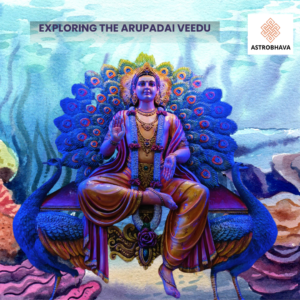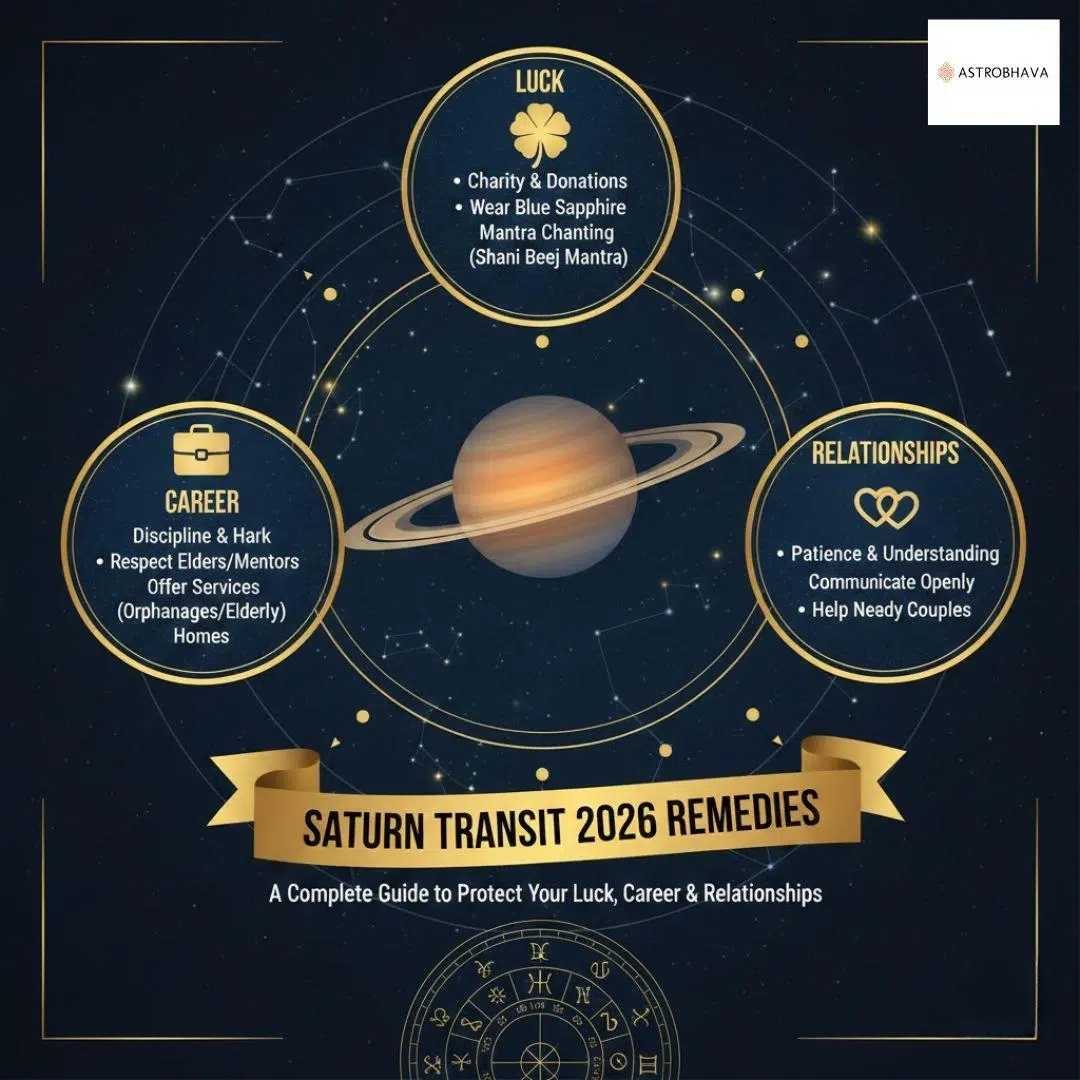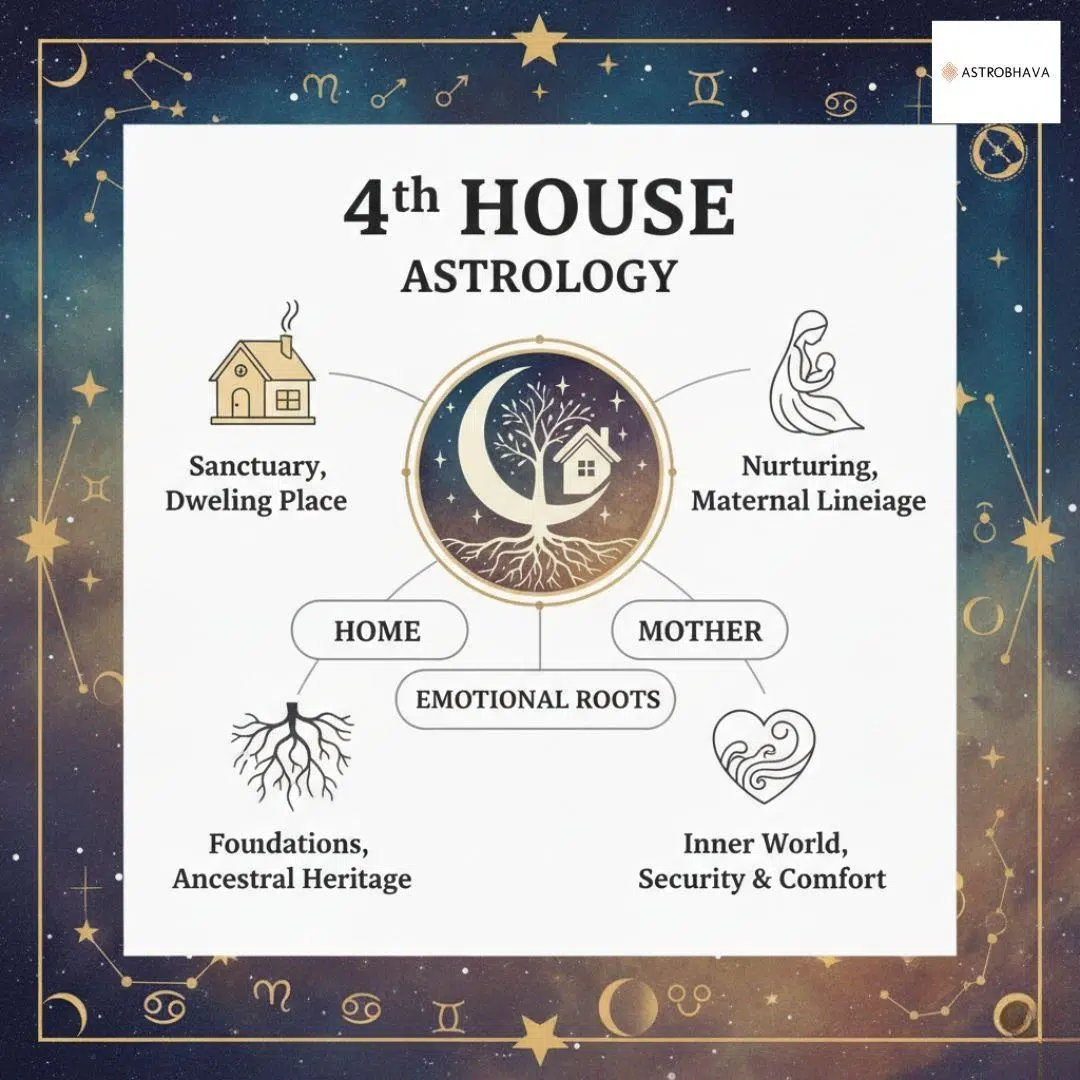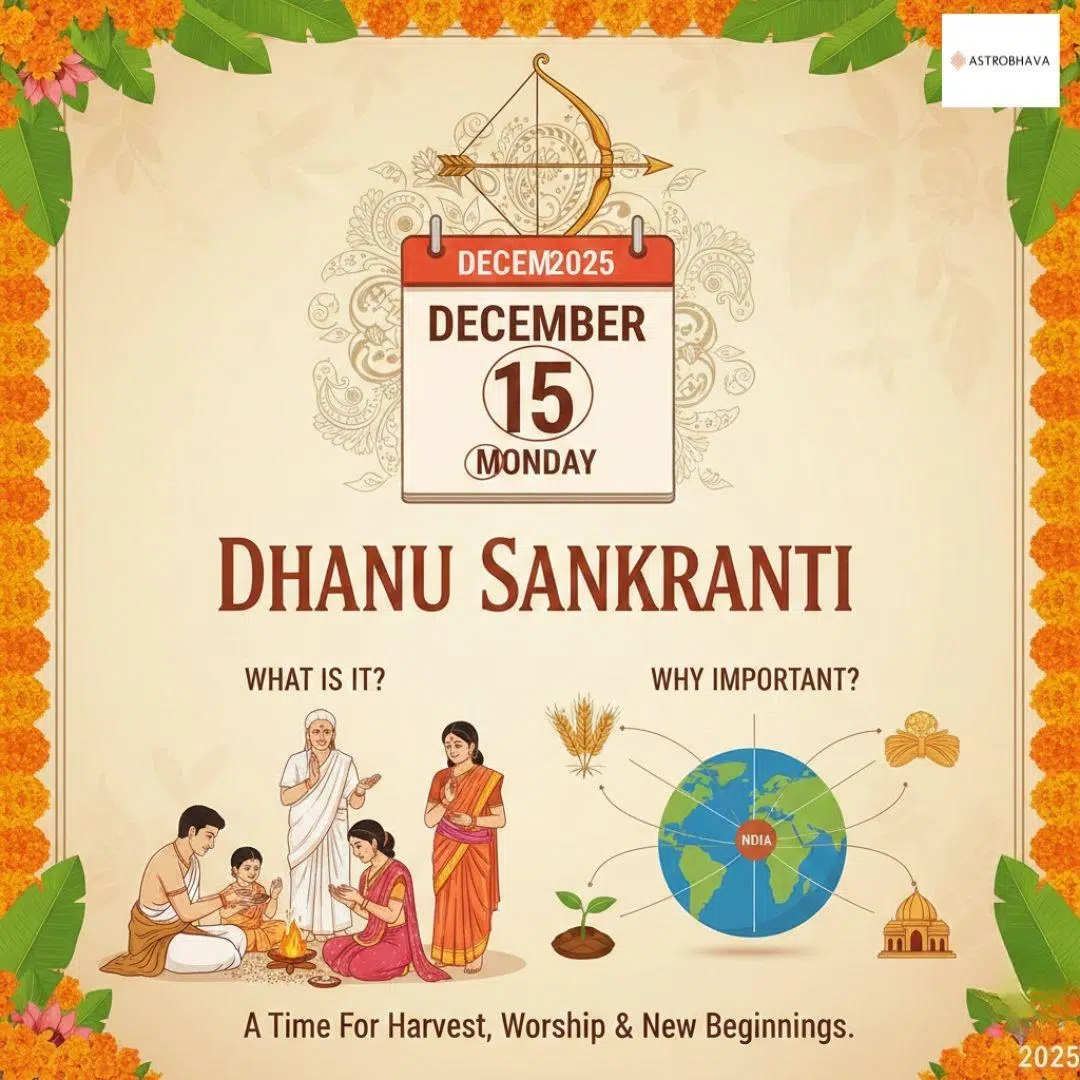9 Sacred Navagraha Temples: A Spiritual Journey
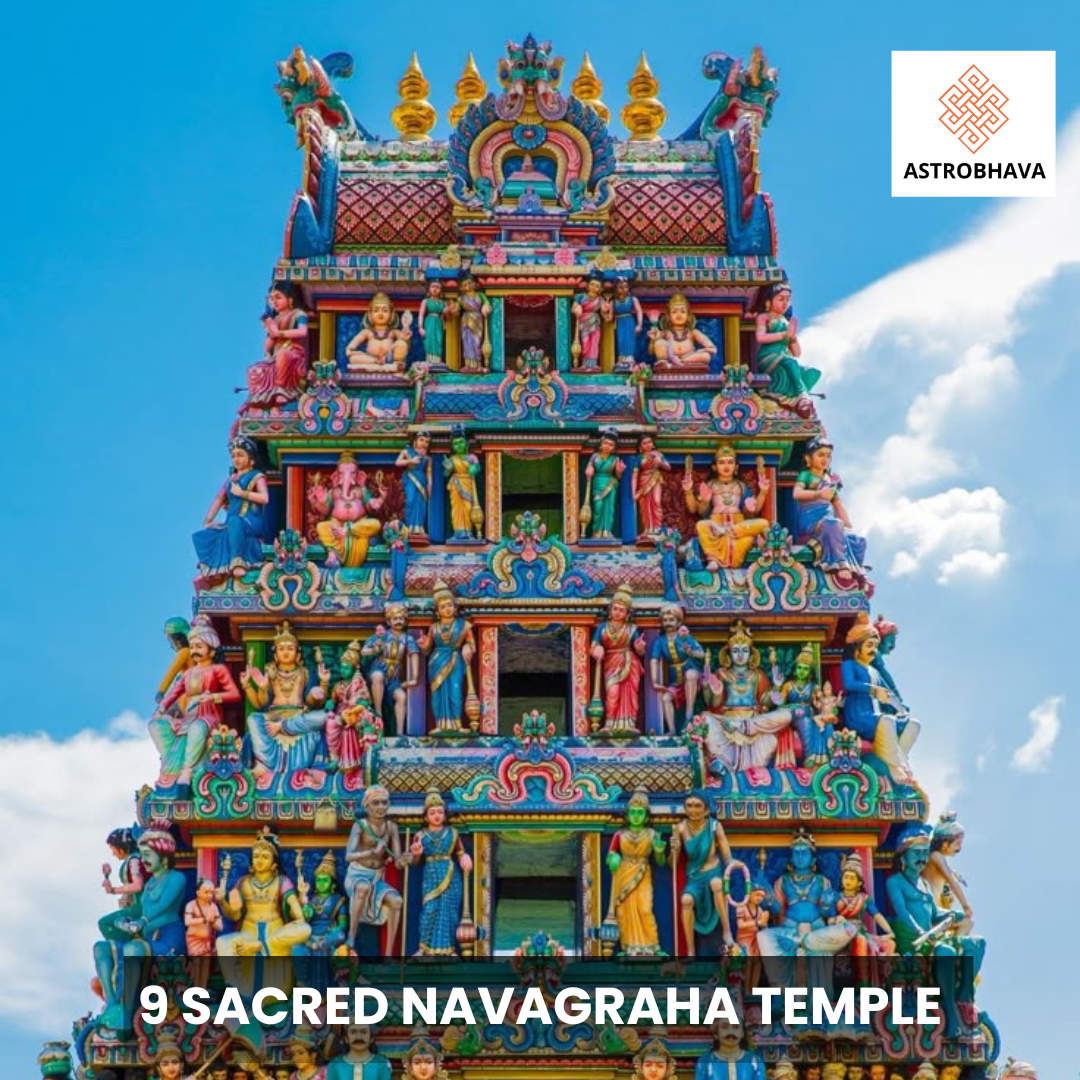
The Navagraha temples hold immense spiritual significance in Hinduism, dedicated to the nine celestial deities—Surya (Sun), Chandra (Moon), Mangal (Mars), Budh (Mercury), Guru (Jupiter), Shukra (Venus), Shani (Saturn), Rahu (North Lunar Node), and Ketu (South Lunar Node). Pilgrimage to these temples is believed to pacify planetary doshas and bring harmony into one’s life. In this blog, we explore the history, spiritual significance, and benefits of visiting these temples while embarking on a divine journey.
Understanding Navagrahas
Navagrahas refer to the nine celestial bodies or planetary forces in Hindu astrology. These nine “grahas” (which translates to “planetary influences”) are believed to have a significant influence on human lives and are associated with various energies, characteristics, and aspects of life. Here are the nine Navagrahas:
- Surya (Sun): The Sun represents the soul, ego, vitality, and authority. It is the source of all life and energy. In astrology, it symbolizes leadership, confidence, and power.
- Chandra (Moon): The Moon represents the mind, emotions, intuition, and mother. It governs mental health, moods, and emotional well-being, and it is also linked to the subconscious.
- Mangala (Mars): Mars is associated with courage, aggression, and energy. It governs action, strength, and ambition. It is linked to the warrior spirit and helps in overcoming challenges.
- Budha (Mercury): Mercury represents intelligence, communication, learning, and analytical abilities. It governs reasoning, speech, and all forms of intellectual activity.
- Guru (Jupiter): Jupiter is the planet of wisdom, knowledge, spirituality, and good fortune. It represents growth, expansion, and the higher mind, as well as learning and teaching.
- Shukra (Venus): Venus governs love, beauty, creativity, and material comforts. It is associated with luxury, relationships, and artistic expression.
- Shani (Saturn): Saturn represents discipline, responsibility, structure, and hard work. It is often seen as a planet of karma and teaches patience, perseverance, and the importance of facing life’s challenges.
- Rahu (North Node of the Moon): Rahu is a shadow planet that represents obsession, desire, and materialism. It is linked to illusions, unconventional behaviors, and foreign or hidden influences in life.
- Ketu (South Node of the Moon): Ketu is the opposite of Rahu and represents spirituality, detachment, and liberation. It is associated with past karma, enlightenment, and the pursuit of inner wisdom.
In Hindu astrology, the position and influence of these planets in one’s birth chart are believed to shape their personality, life experiences, and destiny. Each of these celestial bodies governs specific areas of life, and their influences can be favorable or unfavorable, depending on their placement.
Would you like more details on any specific planet or how they affect different aspects of life?
The History of Navagraha Temples
The Navagraha temples have roots in Vedic astrology and Hindu mythology. The planetary deities are revered as celestial influencers of human fate and destiny. According to ancient scriptures, worshipping these deities helps neutralize negative karmic effects. These temples, primarily located in Tamil Nadu, date back to the Chola dynasty, which constructed them to honor the celestial bodies that shape human life.
The concept of Navagrahas is deeply embedded in Jyotish Shastra (Vedic astrology), which explains that planetary movements influence human experiences. Ancient sages like Maharishi Parashara and Bhrigu provided insights into the planetary effects on life. The Navagraha temples were constructed as a means to appease these planets and mitigate their malefic influences. Each temple is associated with a specific planetary deity, and visiting them while following proper rituals is believed to bring relief from planetary afflictions.
The Chola kings, particularly Raja Raja Chola I, played a significant role in the construction and maintenance of these temples. With detailed inscriptions and grand architectural styles, these temples are not just places of worship but also hold historical and cultural importance. Many of these temples are designed following Vastu Shastra principles, ensuring that their energy aligns with cosmic vibrations.
Pilgrimage to Navagraha Temples
Embarking on a Navagraha temple pilgrimage is a transformative experience. The most famous Navagraha temples are situated in Tamil Nadu’s Cauvery Delta region, forming a sacred circuit. A pilgrimage here is believed to cleanse past karma and enhance spiritual growth.
Pilgrims follow a structured itinerary to visit these temples in a specific sequence to maximize the benefits. The order generally starts with Suryanar Koil (Sun Temple) and proceeds based on an astrologer’s recommendation, depending on which planet is negatively affecting the devotee’s life. A proper pilgrimage includes performing abhishekam (ritual bathing of the deity), offering special poojas, and reciting planetary mantras.
List of 9 Navagraha Temples
The Navagraha Temples are nine sacred temples in Tamil Nadu, India, dedicated to the nine celestial bodies or Navagrahas (planets) that play a crucial role in Hindu astrology. Each temple is dedicated to one of the nine planets, and they are located around the town of Kumbakonam in Tamil Nadu, which is considered the center of these temples. These temples are visited by devotees to seek the blessings of the planets, alleviate astrological doshas (flaws), and bring about prosperity, health, and spiritual progress.
1. Suryanar Kovil (Sun – Surya)
- Deity: Surya (Sun God)
- Location: Kumbakonam, Tamil Nadu
- Significance: This temple is dedicated to Surya, the Sun God, who is believed to be the source of life, vitality, and energy. Surya is considered the ruler of the zodiac sign Leo and represents power, leadership, and authority.
- Legend: It is believed that Surya was cursed by Sage Kacha and was later relieved of his curse at this temple. The temple also has a connection to King Rajendra Chola, who is said to have built it.
- Special Poojas: The temple is especially visited by devotees on Sundays, and special poojas are held during the Ratha Saptami festival.
- Rituals: Offering water to Surya, chanting Aditya Hridayam or Surya Ashtakshara Mantra, and lighting lamps made of ghee are important rituals.
“Radiate Confidence! Get Your Surya Homa Performed”
2. Chandran (Moon) Temple – Tirukkadaiyur
- Deity: Chandra (Moon God)
- Location: Thingalur, Tamil Nadu
- Significance: This temple is dedicated to the Moon, which governs the mind, emotions, and mental health. Moon is also associated with nurturing qualities, motherhood, and intuition.
- Legend: It is believed that the Moon was freed from a curse here by worshipping Lord Shiva. The temple is said to have been built by the Pallava kings.
- Special Poojas: Devotees perform rituals to cure mental afflictions, gain peace of mind, and seek relief from emotional disturbances.
- Rituals: Chandra Graha Shanti pooja is performed, and devotees fast and offer prayers to the Moon for peace and mental well-being.
3. Mangalachandra (Mars) Temple – Vaitheeswaran Koil
- Deity: Mangala (Mars God)
- Location: Vaitheeswaran Koil, Tamil Nadu
- Significance: This temple is dedicated to Mars, the planet of strength, courage, and energy. Mars is linked to action, ambition, and conflict. It is associated with the zodiac sign Aries.
- Legend: According to legend, Lord Shiva cured the sage Vaidya of a curse that affected his health, and this is where the temple came into being.
- Special Poojas: Devotees perform special rituals to overcome obstacles related to career, property disputes, and aggression.
- Rituals: Angaraka Pooja and Mangal Dosh remedies are often sought here. Devotees also offer prayers for health and vitality.
“Seek Celestial Blessings! Plan Your Navagraha Temple Tour Today”
4. Buddhan (Mercury) Temple – Thiruvenkadu
- Deity: Budha (Mercury God)
- Location: Thiruvenkadu, Tamil Nadu
- Significance: This temple is dedicated to Mercury, the planet of intellect, communication, and wisdom. Mercury is associated with learning, business, and technology.
- Legend: It is believed that Budha was blessed by Lord Shiva after intense penance. This temple is known for its connection to knowledge and mental clarity.
- Special Poojas: Mercury is worshipped for intelligence, communication skills, and success in education and business.
- Rituals: Budha Graha Shanti pooja and chanting of mantras related to Mercury are performed here.
5. Guru (Jupiter) Temple – Alangudi
- Deity: Brihaspati (Jupiter God)
- Location: Alangudi, Tamil Nadu
- Significance: This temple is dedicated to Jupiter, the planet of wisdom, knowledge, and spirituality. Jupiter is considered the teacher of the gods and represents good fortune, expansion, and prosperity.
- Legend: According to legend, Brihaspati performed penance here to appease Lord Shiva and attain wisdom. This temple is a major pilgrimage site for seeking spiritual growth and prosperity.
- Special Poojas: Devotees pray for wisdom, wealth, and marital harmony. Guru Peyarchi and Brihaspati Dosh remedies are performed at this temple.
- Rituals: Jupiter Pooja and offerings to gain knowledge and success are popular here.
“Book Guru homa and free yourself from Brihaspati dosh”
6. Shukra (Venus – Shukra) – Kanjanur
- Deity: Shukra (Venus God)
- Location: Kanchanur, Tamil Nadu
- Significance: This temple is dedicated to Venus, the planet of love, beauty, art, and luxury. Venus governs relationships, creativity, and material wealth.
- Legend: It is believed that Shukra, the teacher of the demons, worshipped Lord Shiva at this temple to overcome his challenges and attain strength.
- Special Poojas: Venus is worshipped for prosperity, relationships, and artistic endeavors.
- Rituals: Devotees perform Shukra Graha Pooja for enhancing love life, wealth, and success in creative fields.
7. Shani (Saturn) Temple – Thirunallar
- Deity: Shani (Saturn God)
- Location: Thirunallar, Tamil Nadu
- Significance: This temple is dedicated to Saturn, the planet of karma, discipline, and hard work. Shani represents justice, responsibility, and the lessons one must learn through suffering.
- Legend: It is believed that Shani was relieved of his affliction here by Lord Shiva. Devotees visit this temple to appease Shani and overcome difficulties in life.
- Special Poojas: Shani Dosh remedies, Shani Shanti pooja, and offering black sesame seeds are performed here to remove obstacles caused by Saturn’s malefic influence.
- Rituals: Offering oil to Shani and reciting Shani Ashtakshara Mantra are common practices.
8. Rahu (North Node) Temple – Thirunageswaram
- Deity: Rahu (North Node of the Moon)
- Location: Seruthur, Tamil Nadu
- Significance: This temple is dedicated to Rahu, a shadow planet that represents obsession, illusions, and desires. Rahu is often associated with foreign influences, confusion, and unfulfilled aspirations.
- Legend: Rahu is said to have caused the eclipse by swallowing the nectar of immortality. Worshipping Rahu here is believed to relieve negative planetary effects.
- Special Poojas: Rahu Dosh remedies and rituals for the removal of obstacles in life are performed at this temple.
- Rituals: Devotees offer coconuts, sesame seeds, and recite Rahu Mantras to alleviate Rahu’s malefic influence.
“Tame Rahu’s Shadow! Book Puja Now”
9. Ketu (South Node) Temple – Keezhperumpallam
- Deity: Ketu (South Node of the Moon)
- Location: Keezhperumpallam, Tamil Nadu
- Significance: This temple is dedicated to Ketu, the opposite of Rahu, symbolizing spirituality, enlightenment, and liberation. Ketu is associated with detachment, past karma, and spiritual growth.
- Legend: Ketu, who caused the eclipse by taking the form of a serpent, is said to have been worshipped here for redemption.
- Special Poojas: Ketu Dosh remedies and spiritual practices to overcome obstacles caused by past karma are done here.
- Rituals: Offering prayers for detachment, spiritual awakening, and the resolution of past life issues is common at this temple.
Rituals and Offerings at Navagraha Temples
Each Navagraha temple has distinct rituals and offerings that align with the characteristics of the planetary deity it represents. Devotees often perform these rituals to seek blessings, mitigate planetary afflictions, and invite positive influences into their lives.
- Surya Temple (Sun) – Worshippers offer red flowers, wheat, and jaggery while reciting the Aditya Hridayam Stotra. Performing Surya Namaskar (sun salutations) at sunrise is also considered highly beneficial.
- Chandra Temple (Moon) – Offerings of white flowers, rice, and milk are made to calm the mind and emotions. Reciting the Chandra Beej Mantra is believed to reduce emotional turmoil.
- Mangal Temple (Mars) – Red gram, red cloth, and pomegranates are offered to Mars to alleviate Mangal dosha and bring courage and success.
- Budh Temple (Mercury) – Green moong dal, green cloth, and Durva grass are commonly offered to improve communication skills and intelligence.
- Guru Temple (Jupiter) – Yellow flowers, turmeric, and yellow sweets like besan laddoos are offered to seek wisdom, prosperity, and spiritual progress.
- Shukra Temple (Venus) – Devotees offer white flowers, sweets made from milk, and sandalwood paste to Venus for enhancing love, beauty, and luxury.
- Shani Temple (Saturn) – Mustard oil, black sesame seeds, and black cloth are offered to Shani to reduce hardships and balance karma.
- Rahu Temple (North Lunar Node) – Worshippers offer black urad dal, blue flowers, and coconut to Rahu to dispel illusions and remove obstacles in career and material success.
- Ketu Temple (South Lunar Node) – Offerings of horse gram, white cloth, and flag hoisting rituals are performed to enhance spiritual growth and dissolve past karmic burdens.
“Meditate with Ketu’s Blessings! Book Ketu Puja“
Balancing Planetary Influences with Navagraha Temple Pilgrimage
According to Vedic astrology, planetary positions at birth impact one’s destiny. If malefic planets dominate a horoscope, they may cause challenges in health, career, and relationships. A pilgrimage to Navagraha temples helps in balancing planetary influences by offering special prayers, lighting lamps, and performing rituals like abhishekam and archana. Devotees often visit an astrologer before the pilgrimage to determine which planet needs appeasement.
Each planetary deity governs a specific aspect of life. For instance, Surya influences leadership qualities, Chandra affects emotions, and Guru governs knowledge. Performing rituals specific to each planet helps counteract its negative effects and enhances its positive energies.
Significance of Navagraha Pilgrimage
- Remedies for Planetary Afflictions: Many believe that unfavorable planetary positions cause obstacles in life. Worshipping Navagrahas helps reduce their negative effects.
- Balancing Cosmic Energies: The Navagrahas symbolize different cosmic energies; offering prayers harmonizes these energies for a balanced life.
- Enhancing Positive Influence: Strengthening beneficial planets through prayers, mantras, and rituals attracts success, peace, and prosperity.
- Spiritual and Personal Growth: Navagraha worship encourages discipline, patience, and devotion, leading to inner transformation.
- Astrological Significance: People perform special Navagraha pujas based on their horoscope (janma kundali) to remove doshas (flaws) and seek divine blessings.
Pilgrims often notice changes in their personal and professional lives after completing this sacred journey. Many claim relief from chronic issues and enhanced stability in their endeavors.
Experience the Spiritual Power of Navagraha Temples with AstroBhava
The 9 Sacred Navagraha Temples form a deeply significant spiritual journey, where pilgrims can connect with the celestial energies represented by the nine planets in Hindu astrology. Each temple is dedicated to a specific planet, offering devotees a chance to appease and seek blessings from Surya (Sun), Chandra (Moon), Mangala (Mars), Budha (Mercury), Guru (Jupiter), Shukra (Venus), Shani (Saturn), Rahu (North Node), and Ketu (South Node).
Visiting these temples is not only about seeking relief from planetary afflictions but also about finding a deeper connection to one’s karmic journey and spiritual growth. The worship rituals, prayers, and offerings performed at each temple are believed to purify the mind, body, and soul, aligning the devotee with cosmic forces and fostering harmony in life.
To fully experience the divine power of Navagraha temples, consult expert astrologers at AstroBhava. Get personalized insights on how planetary positions influence your life and learn how a Navagraha temple pilgrimage can bring positive transformations. Connect with AstroBhava today and start your journey toward divine harmony! Embark on this sacred journey and balance your planetary influences with the divine blessings of Navagraha temples!
FAQs on Navagraha Temple Pilgrimage
1. What is the best time to visit Navagraha temples?
The best time to visit is during Guru Peyarchi (Jupiter Transit) and Shani Peyarchi (Saturn Transit), as well as during auspicious Hindu festivals like Maha Shivaratri.
2. Can I visit all Navagraha temples in one day?
While it is possible, it is advisable to spread the pilgrimage over 2-3 days to perform proper rituals at each temple.
3. Do I need to follow any specific rituals at these temples?
Yes, offerings such as oil lamps, abhishekam, and homam are commonly performed to appease planetary deities.
4. Are there any restrictions on visiting these temples?
It is recommended to wear traditional attire and maintain a vegetarian diet before and during the pilgrimage.
5. How can AstroBhava help with my pilgrimage?
AstroBhava provides astrological consultations, personalized rituals, and guidance for Navagraha temple pilgrimages, ensuring a spiritually fulfilling experience.
Related posts:
Categories
- 10th House meaning
- 12th house astrology
- 12th House Moon meaning
- 1st house in astrology
- 2025 astrology
- 2025 festivals
- 2025 planetary movements
- 27 nakshatras
- 2nd house astrology finance
- 2nd house in astrology
- 2nd house in astrology explained
- 3rd house in astrology
- 4th house in astrology
- 9th house moon astrology
- abundance mantra
- Antardasha
- aries personality
- aries traits
- aries zodiac sign
- ascendant in astrology
- astro guide
- astro predictions 2025
- astro remedies
- astro tips
- Astrobhava
- Astrobhava astrology
- Astrobhava blog
- astrological effects
- astrological guidance
- astrological love compatibility
- Astrological love languages
- astrological planets
- Astrological Remedies
- astrology
- astrology 2025
- astrology 2026
- astrology 2nd house meaning
- astrology basics
- astrology benefits
- astrology calculator
- astrology career path
- astrology career prediction
- astrology compatibility
- astrology consultation
- astrology for business
- astrology for wealth
- astrology gemstones
- astrology guide
- Astrology Guides
- astrology houses
- astrology houses guide
- astrology insights
- astrology love guide
- astrology lucky color
- astrology predictions
- astrology remedies
- astrology remedies for job
- Astrology Remedies for Wellness
- astrology rituals
- astrology solutions
- astrology soulmate signs
- astrology sun planet
- astrology tips
- auspicious yogas
- Bhagavad Gita Jayanti
- birth chart
- birth chart analysis
- birth chart planets
- birth chart reading
- birth star matching
- business astrology
- business partnership astrology
- business success astrology
- career astrology
- Career Astrology & Personal Growth
- career astrology remedies
- career by nakshatra
- career growth remedies
- career stagnation remedies
- color astrology
- communication astrology
- communication planet
- compatibility chart
- Cosmology
- daily mantras
- Dasha
- dasha period calculator
- Dasha system
- Dhanu Sankranti 2025
- divine blessings
- dosha
- dosha remedies
- dreams interpretation
- dreams meaning
- Ekadashi benefits
- Ekadashi rituals
- Ekadashi vrat
- emotional astrology
- emotional compatibility
- emotional growth astrology
- emotional healing
- entrepreneurial astrology
- Festivals & Vedic Rituals
- financial astrology
- fire sign aries
- first house meaning
- fourth house meaning
- Gaja Kesari Yoga
- Gaja Kesari Yoga benefits
- gemstone astrology
- gemstone benefits
- Gita Jayanti 2025 astrology
- Gita Jayanti astrology
- hindu astrology
- Hindu calendar 2025
- Hindu fasting
- Hindu Festivals
- Hindu festivals 2025
- Hindu festivals astrology
- hindu rituals
- Homa and Fire Rituals (Yagna)
- home and family astrology
- horoscope
- horoscope 2025
- horoscope analysis
- horoscope colors
- horoscope correction
- horoscope guide
- horoscope insights
- horoscope matching
- horoscope reading
- horoscope remedies
- horoscope yoga benefits
- Indian astrology
- insightful trade
- Japa
- job astrology
- Jupiter Moon yoga
- kundli matching
- kundli reading
- lagna in astrology
- Latcharchana remedies
- list of 27 nakshatras
- lord of nakshatra
- love astrology
- love horoscope
- love match astrology
- lucky color for zodiac signs
- lucky gemstones
- lunar rituals
- lunar signs
- Mahadasha
- Mahadasha Calculator
- mahadasha effects
- Mahadasha periods
- Mahadasha prediction
- Mahadasha remedies
- mahadasha results
- Makar Sankranti
- manifestation mantras
- Mantra
- mantra chanting tips
- mantras for success 2026
- Margashirsha puja
- Margashirsha Purnima 2025
- Margashirsha rituals
- Marriage Auspicious Day
- marriage matching
- match making astrology
- Mercury direct 2025
- mercury direct meaning
- Mercury in astrology
- Mercury planet
- Mercury Retrograde
- Mercury Retrograde dates
- Mercury Retrograde effects
- mindset improvement
- Moon and profession
- Moon astrology
- Moon astrology insights
- Moon effects in astrology
- Moon house meaning
- Moon in 10th House
- Moon in 11th House
- Moon in 12th House
- Moon in 6th House
- Moon in 6th House effects
- Moon in 6th House remedies
- Moon in 7th House
- Moon in 7th House astrology
- Moon in 7th House effects
- Moon in 7th House love
- Moon in 7th House marriage
- Moon in 7th House meaning
- Moon in 7th House remedies
- Moon in 8th House
- moon in 8th house love
- moon in 8th house marriage
- moon in 9th house
- moon in 9th house effects
- Moon in Astrology
- moon in eighth house effects
- Moon in Eleventh House meaning
- moon in ninth house meaning
- Moon in Sixth House astrology
- Moon in tenth house career
- moon meaning
- Moon placement
- Moon placement in 7th House
- nadi astrology
- Nakshatra and Mahadasha
- nakshatra astrology
- nakshatra calculator
- nakshatra career guide
- nakshatra characteristics
- Nakshatra compatibility
- nakshatra guide
- nakshatra healing
- nakshatra job compatibility
- Nakshatra Lord
- nakshatra matching for marriage
- nakshatra meaning
- Nakshatra Remedies
- nakshatra ruler
- nakshatras
- natal chart analysis
- natal chart meaning
- numerology
- online astrology tool
- Panchami Festival
- partnership compatibility
- past karma
- past karma astrology
- personality in astrology
- Pilgrimage
- planet mercury meaning
- planetary dasha calculator
- planetary insights
- planetary mahadasha
- planetary periods
- planetary remedies
- planetary retrograde
- planetary transits 2025
- planets houses
- positivity rituals
- powerful astrology solutions
- powerful mantras
- Progency
- Puja & Rituals
- puja remedies
- Purnima 2025
- relationship astrology
- Relationships
- religious dates India
- remove career blockages
- retrograde meaning
- rudra puja
- Rudraksha and gemstone
- sankranti 2025
- Sankranti puja
- sankranti rituals
- Saphala Ekadashi 2025
- Saturn japa
- Saturn remedies
- saturn transit 2026 remedies
- shani dev mantra
- Shani dosha
- Shani japa benefits
- Shani mantra
- shani mantra 2026
- shani mantra benefits
- shani remedies
- Spiritual Astrology
- spiritual benefits
- spiritual growth
- Spiritual Guide
- spiritual healing
- Spiritual Practices and Chanting
- spiritual remedies
- Spiritual Rituals and Personal Empowerment
- spiritual significance
- Spiritual Tools & Personal Growth
- Spiritual Wellness and Protection
- Spirituality and Rituals
- Spirituality or Vedic Rituals
- star sign compatibility
- success mantras
- sun and zodiac signs
- Sun in Astrology
- sun in horoscope
- sun planet effects
- sun planet meaning
- sun power in astrology
- temple rituals
- transit astrology
- twin flame astrology
- Twin Flame Astrology Signs
- twin flame compatibility
- twin flame signs
- Utpanna Ekadashi 2025
- Utpanna Ekadashi dates
- Utpanna Ekadashi rituals
- Utpanna Ekadashi significance
- Vaikuntha Dwar
- Vaikuntha Ekadashi 2025
- Vastu Tips
- Vedic Astrology
- vedic astrology tools
- Vedic remedies
- Vivaah Panchami
- Vivaah Panchami Puja
- Vivaah Panchami Rituals
- Vivaah Panchami Significance
- vrat guide
- vrischik sankranti puja
- vrishchik rashi
- Vrishchik sankranti
- yantras
- yoga effects
- zodiac astrology
- zodiac colors meaning
- zodiac compatibility
- zodiac lucky colors
- zodiac moon traits
- zodiac relationships
- Zodiac Signs


